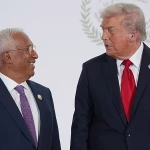The President and CEO of Saudi Aramco, Eng. Amin Al-Nasser, recently called for an updated energy transition plan that would better address the needs of all countries, with a special focus on Asia and the global south. In a keynote speech at the Singapore International Energy Week, Al-Nasser highlighted the importance of developing a new energy transition plan that takes into account Asia’s crucial role on the global stage, its available resources, and future growth prospects. He emphasized the need for practical implementation over theoretical planning, as progress in the transformation process has been slower and more complex than expected.
Al-Nasser stressed the importance of systematically reducing emissions to achieve maximum impact at an acceptable cost and within a reasonable timeframe. The approach to the new energy transition plan will be multi-source, multi-speed, and multi-dimensional to ensure inclusivity and fairness. It will prioritize energy security, countries’ ability to bear costs, and sustainability, without favoring one type of energy or technology over another. The updated plan will focus on Asia at its core, taking into account the actual priorities of the region and developing countries.
One of the main challenges of the energy transition highlighted by Al-Nasser is the cost involved. The global estimated cost for the required transition is between $100 and $200 trillion by 2050, with developing countries potentially needing around $6 trillion annually. Developing countries also face higher costs of initial capital investment due to higher cost of capital, making the transition even more challenging for them. The new plan will need to address these cost challenges and ensure that developing countries are not disproportionately burdened by the financial implications of the transition.
In his speech, Al-Nasser emphasized the need for a revised approach to energy transition that prioritizes practical implementation and takes into account the specific needs and priorities of different regions, especially Asia and the global south. By focusing on reducing emissions systematically, the plan aims to achieve maximum impact while ensuring fairness, affordability, and sustainability. It will not favor any particular type of energy or technology, but rather take a holistic approach to address the energy transition challenges faced by different countries around the world.
The proposed energy transition plan will prioritize energy security, countries’ ability to bear costs, and sustainability, with a focus on Asia at its core. By addressing the actual priorities of the regions and developing countries, the plan aims to create a more inclusive and effective approach to the global energy transition. Al-Nasser’s call for an updated energy transition plan highlights the need for a comprehensive and practical strategy that can meet the challenges of the 21st century while ensuring a sustainable and equitable energy future for all.











